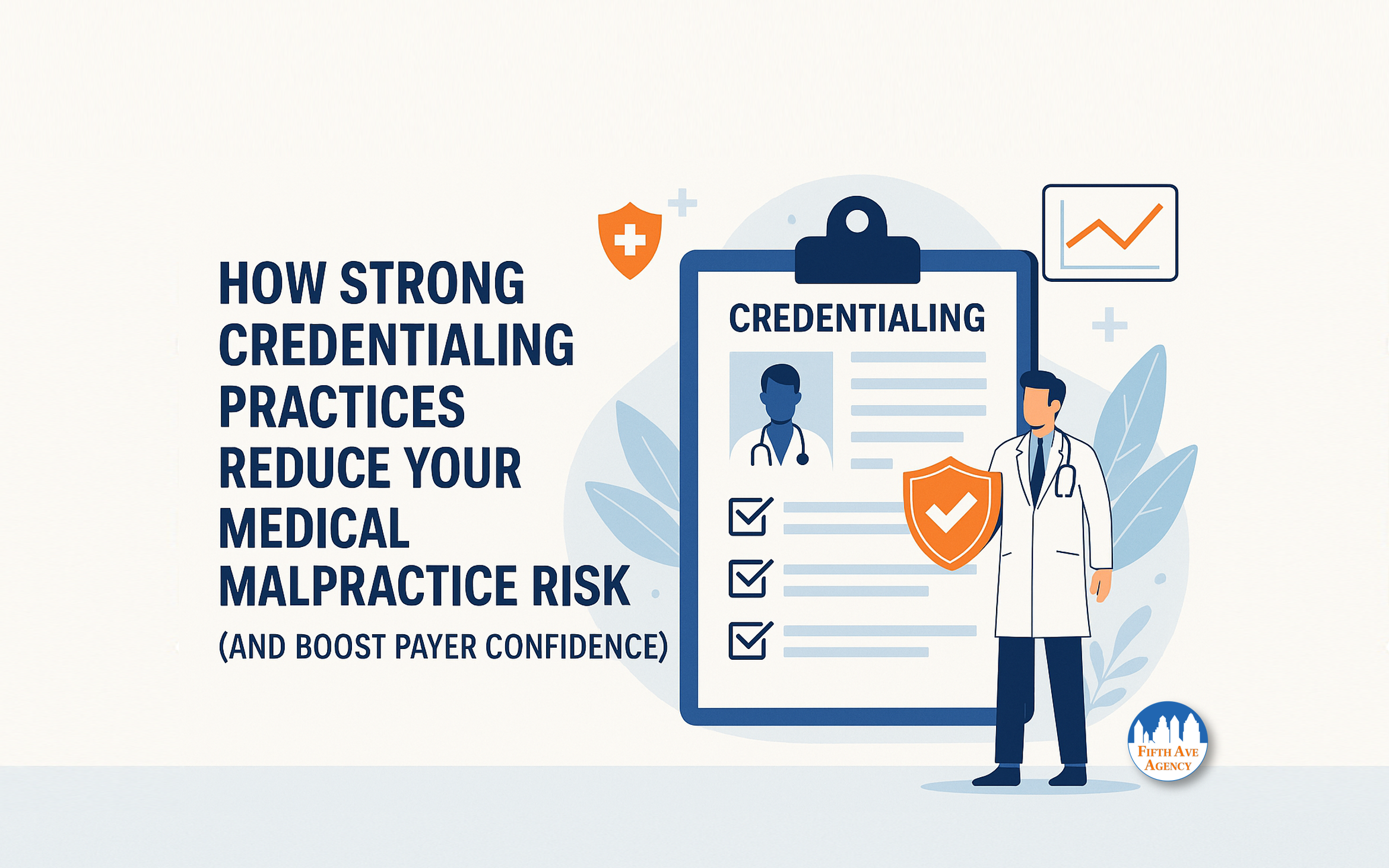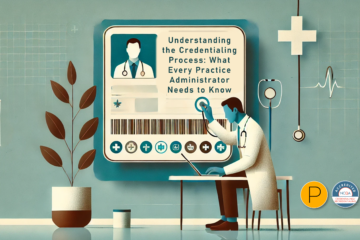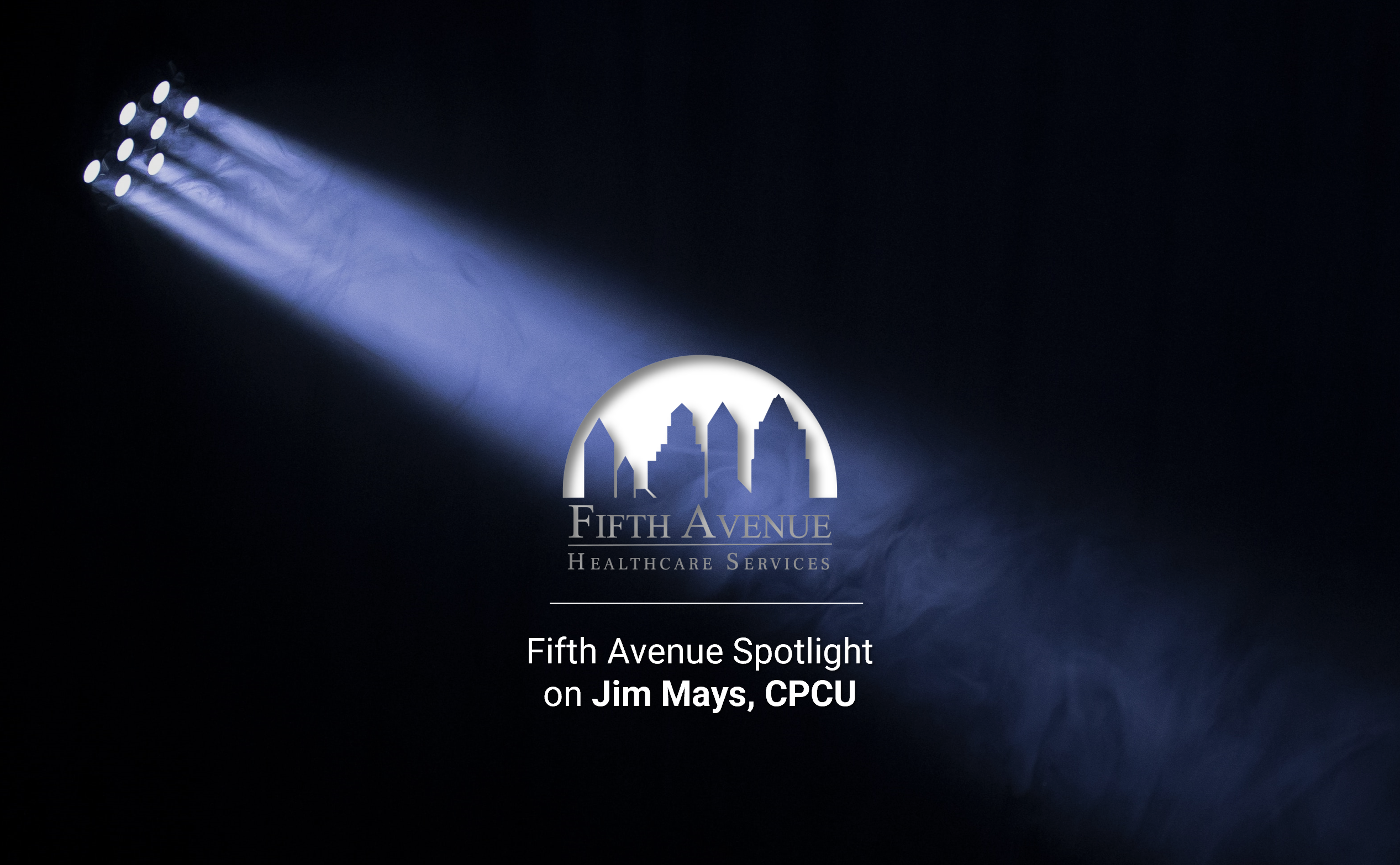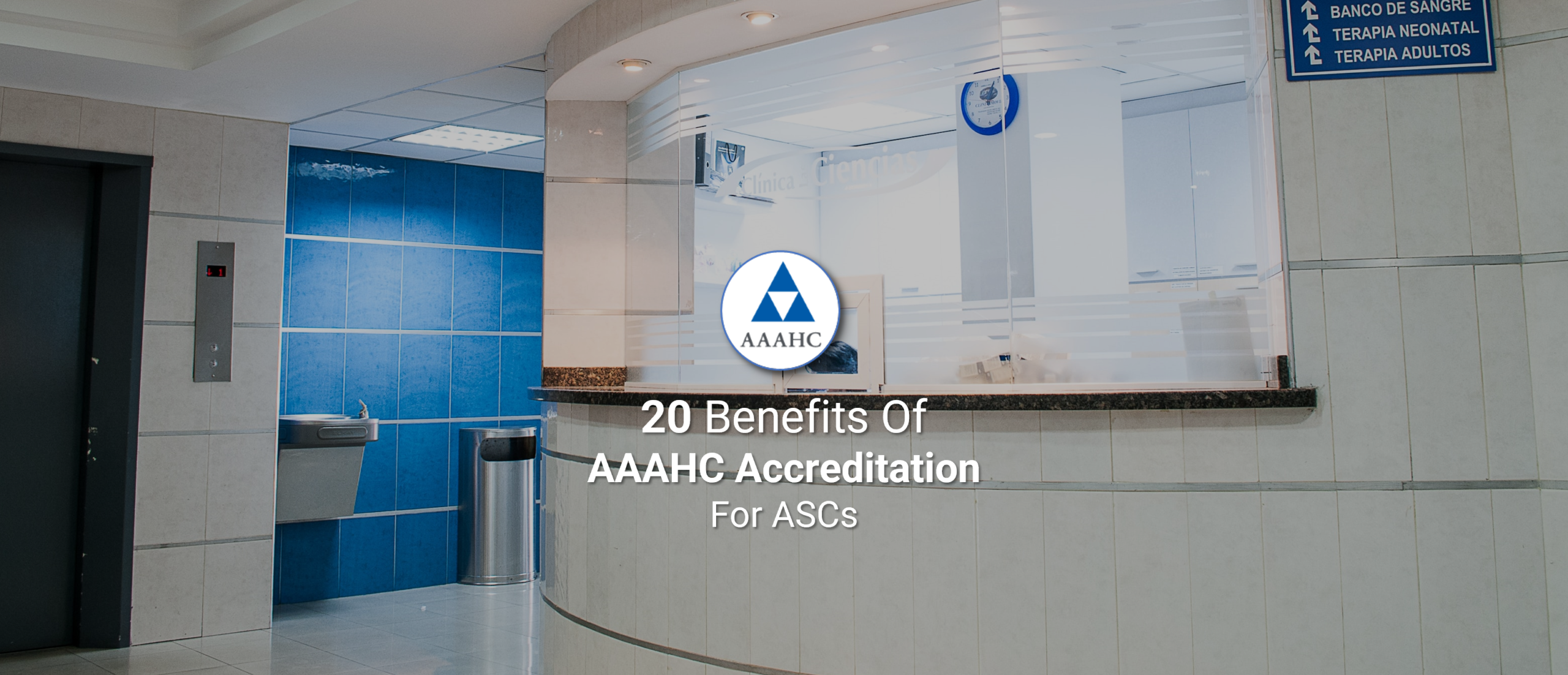Credentialing, the process of verifying the qualifications and professional background of healthcare providers, is a necessary evil in the medical field. While its primary goal is to ensure patient safety and high standards of care, the process often garners frustration and disdain from healthcare providers and administrators alike. Here’s why credentialing usually feels like it sucks.
1. Time-Consuming and Tedious
Credentialing is notorious for being a lengthy and laborious process. On average, it can take several months to complete (and with common delays, the process can take up to 180 days), during which time healthcare providers might be unable to work at their full capacity. The process involves collecting and verifying a vast array of documents, including diplomas, licenses, certifications, work history, and malpractice history.
See here for a common list of some 52 conventional credentialing steps that must be reviewed prior to producing a completed file. Each document must be meticulously checked and rechecked, leading to significant delays and a mountain of paperwork.
Helpful Idea: Implementing automated systems that streamline document collection and verification can significantly reduce the time required for credentialing. By using electronic signatures and digital storage, healthcare organizations can reduce the administrative burden and speed up the process, enabling providers to start practicing sooner.
2. Redundant and Repetitive
One of the biggest complaints about credentialing is the redundancy involved. Providers often have to submit the same information multiple times for different organizations or even within the same organization. Despite technological advances, many healthcare systems still rely on manual processes and outdated methods, causing unnecessary duplication of effort.
Possible Solution: Adopting centralized credentialing databases that allow providers to submit their information once and share it across multiple organizations can minimize redundancy. This approach not only saves time but also reduces the frustration of multiple submissions, making the credentialing process more efficient. For example, Fifth Avenue Healthcare Service’s CVO team handles primary source verifications and collaborates closely with its Primoris team for payer enrollment. By utilizing credentialing data from the CVO team, they minimize duplicate data requests from providers whenever possible.
3. Inconsistent Standards
Credentialing requirements vary significantly between organizations, payers, and States, leading to confusion and frustration. There is no universal standard for credentialing, meaning that what is acceptable in one hospital may not be sufficient in another. This inconsistency forces providers to navigate a complex web of varying standards and requirements, adding to the overall burden.
Helpful Idea: Establishing uniform credentialing standards across states and organizations can simplify the process for providers working in multiple locations. This could be achieved through national accreditation bodies setting comprehensive guidelines that are universally accepted, reducing variability and confusion.
4. Resource-Intensive
Credentialing drains time and resources. Healthcare organizations must dedicate staff and financial resources to managing the credentialing process. This includes hiring credentialing specialists, maintaining databases, and often investing in credentialing software. For smaller practices, these credentialing costs can be particularly burdensome.
Possible Solution: Outsourcing the credentialing process to specialized firms like 5ACVO can alleviate the burden on healthcare organizations. These firms, equipped with expertise and technology, can manage credentialing more efficiently, allowing healthcare providers to focus on patient care rather than administrative tasks.
5. Impact on Patient Care
The delays inherent in the credentialing process can directly impact patient care. Providers stuck in credentialing limbo cannot see patients, leading to gaps in care and potentially longer appointment wait times. This can exacerbate existing challenges in understaffed areas and negatively affect patient outcomes.
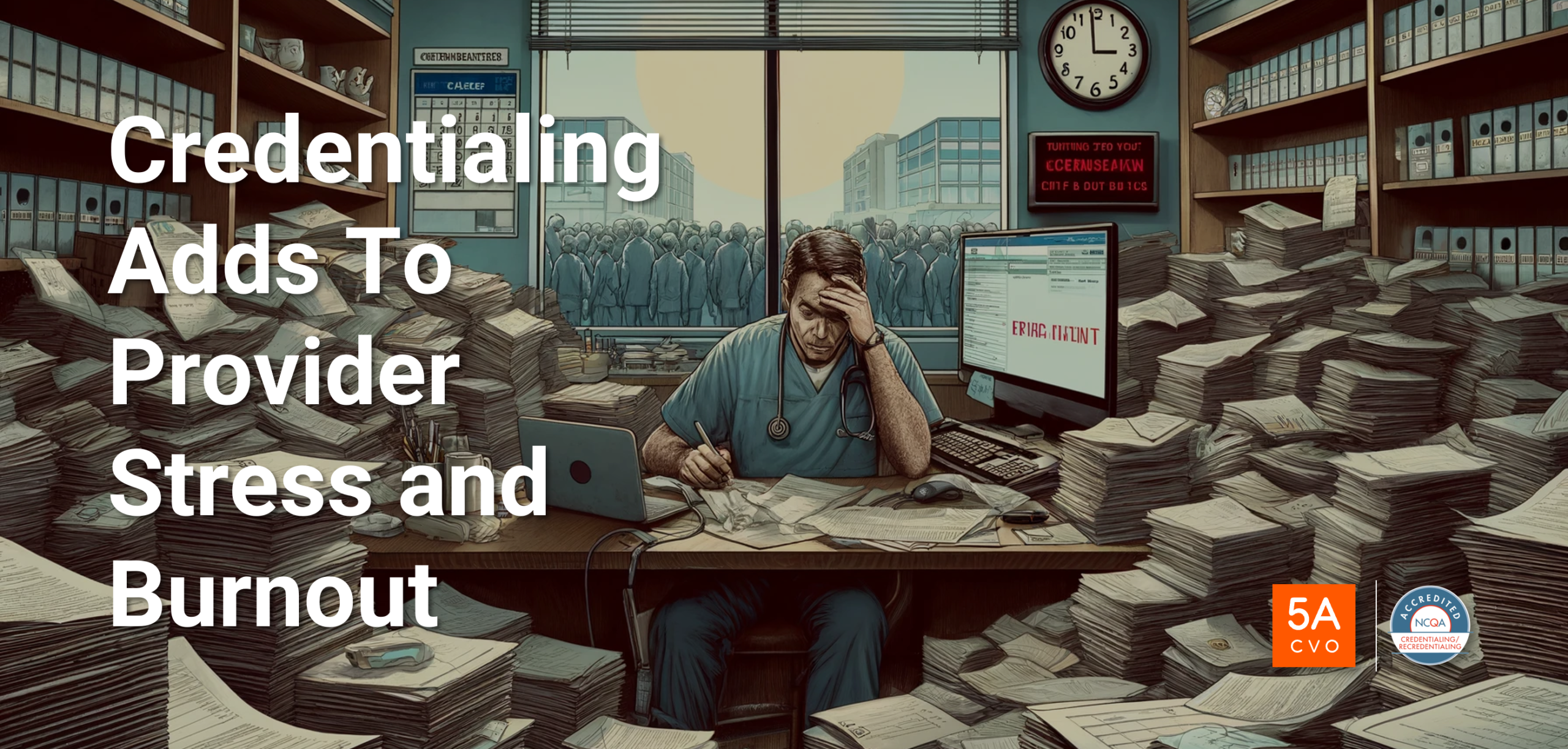
Helpful Idea: Utilizing interim credentialing procedures during peak times or while waiting for full credentialing can help maintain patient care continuity. These procedures, such as temporary permits, temporary privileges or provisional credentials, allow providers to begin work sometimes under review or supervision, thereby avoiding gaps in service.
6. Stress and Burnout
The bureaucratic nature of credentialing contributes to the stress and burnout already prevalent in the healthcare profession. Providers must juggle the demands of their clinical responsibilities with the administrative burden of credentialing. The constant back-and-forth, frequent follow-ups, and the uncertainty of the process can be mentally exhausting.
Possible Solution: Providing support and clear communication throughout the credentialing process can help reduce stress for healthcare providers. Regular updates, clear timelines, and a dedicated point of contact can improve the overall experience, making providers feel supported and valued.
7. Technological Shortcomings
While technology has the potential to streamline credentialing, many systems are still plagued by inefficiencies. Inadequate integration between different platforms, lack of user-friendly interfaces, and security concerns can hinder the effectiveness of digital credentialing solutions. Providers and administrators are often left grappling with tech issues that add to their frustration.
Helpful Idea: Investing in partnering with a credentialing company that provides robust technological tools, such as a user-friendly credentialing web portal, can address many technological challenges. Features like cloud storage, instant roster reports, real-time updates, and secure access can enhance the efficiency and security of the credentialing process.
8. Changing Regulations
The healthcare landscape constantly evolves, introducing new regulations and standards regularly. Keeping up with these changes adds another layer of complexity to the credentialing process. Providers and credentialing staff must stay informed and adapt to new requirements, which can be time-consuming and challenging.
Possible Solution: Regular training sessions and updates on regulatory changes can keep credentialing staff informed and compliant. Additionally, employing dedicated compliance officers to oversee these updates can ensure that the credentialing process remains in line with current laws and best practices, avoiding legal pitfalls and maintaining high standards of care.
Resource: Using The Credentialing Calculator
To understand the financial impact of inefficient credentialing, healthcare providers and groups can use our Credentialing Calculator, available at CredentialingSucks.com. This innovative tool quantifies just how much potential net income is lost due to delays and inefficiencies in the credentialing process.
By entering specific data related to their current operations, providers can receive a personalized estimate of the potential income that could be regained by streamlining the process through outsourcing to Fifth Avenue Healthcare Service’s credentialing verification organization (5ACVO). The calculator considers factors such as the number of providers, average delay in credentialing, and potential patient volume, offering a clear financial picture of what might be gained from enhancing credentialing efficiency.
This insight can be pivotal for decision-makers contemplating the return on investment from outsourcing their credentialing operations.
Conclusion: 8 Reasons Why Credentialing Sucks!
While credentialing is essential for maintaining high standards in healthcare, the process is fraught with challenges that make it a source of frustration for many. The time-consuming nature, redundancy, inconsistent standards, resource demands, impact on patient care, stress, technological shortcomings, and changing regulations all contribute to the sentiment that credentialing sucks.
Addressing these issues through standardized processes, improved technology, and greater efficiency can help alleviate some of the pain points associated with credentialing, ultimately benefiting providers and patients alike.
More information about 5ACVO
5ACVO is NCQA Credentialing Accredited, specializing in credentialing and primary source verification, and is part of the Fifth Avenue Healthcare Services family. 5ACVO sister companies include Fifth Avenue Agency (MPLI and medical malpractice insurance specialists) and Primoris Credentialing Network (credentialing and provider enrollment specialists with 54+ health plan and network provider enrollment options).
5ACVO originally published this article here. For more information on 5ACVO, please visit 5ACVO.com or Contact Us.




